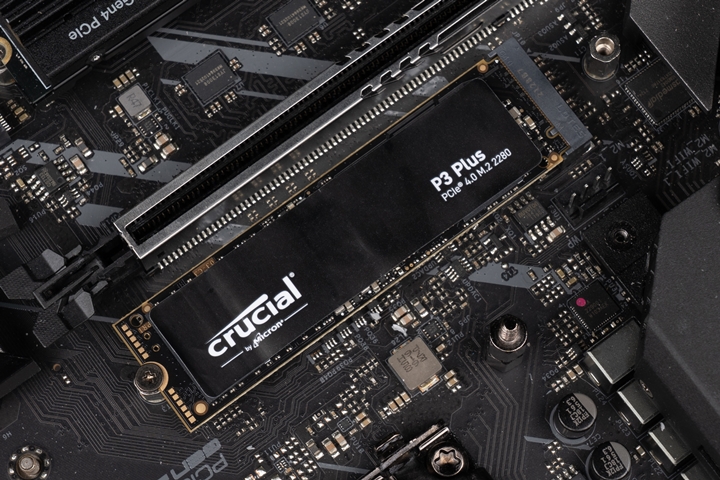
When it comes to storage-related products, players are no strangers to Micron’s brand Crucial, which has P-series SSDs featuring NVMe protocol technology, including entry-level P1, P2 and high-end P5, and this year they are again Launched P3 and P3 Plus to enrich its product lineup. This time we will unpack the P3 Plus SSD 1TB version with PCIe 4.0 x4. Its sequential read and write speeds can be as high as 5,000, 3,600 MB/s, and 500GB, 2TB, and 4TB are also available for players to choose from. A limited warranty makes it easy for players to get a high-speed experience.
Specifications
Capacity: 1TB (also 500GB, 2TB, 4TB)
Dimensions: M.2 2280, M key
interface: PCIe 4.0 x4, NVMe 1.4
Master chip: Phison PS5012-E21-48
Storage particle: 176-layer QLC 3D NAND Flash
Sequential Read/Write Speed: 5000/3600 MB/s
Endurance: 220 Total Bytes Written (TBW)
Warranty: 5 Years Limited Warranty
Crucial P3 Plus PCIe 4.0 NVMe SSD out of the Box
Crucial Brand New P3 and P3 Plus The main control chip and storage chip used are the same, and both are M.2 2280 size, NVMe 1.4 specification, the main difference is that the P3 uses PCIe 3.0 x4, while the P3 Plus is a faster PCIe 4.0 x4 interface.
The editor has the Crucial P3 Plus SSD 1TB version, and the performance and lifespan are different under different capacities. The sequential read and write speeds of this 1TB version are 5,000 and 3,600 MB/s, and the total write life is 220 TBW. For the 4TB capacity version, the sequential read and write speeds are 4,800, and 4,100 MB/s, and the total write life is 800 TBW.
In addition to having efficient transmission speed, the product warranty is also very important. Crucial gives a 5-year limited warranty service, allowing players to enjoy high speed without worry.
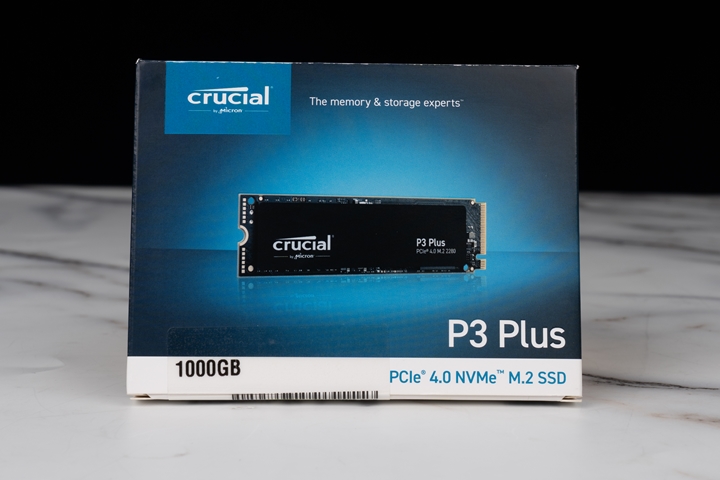
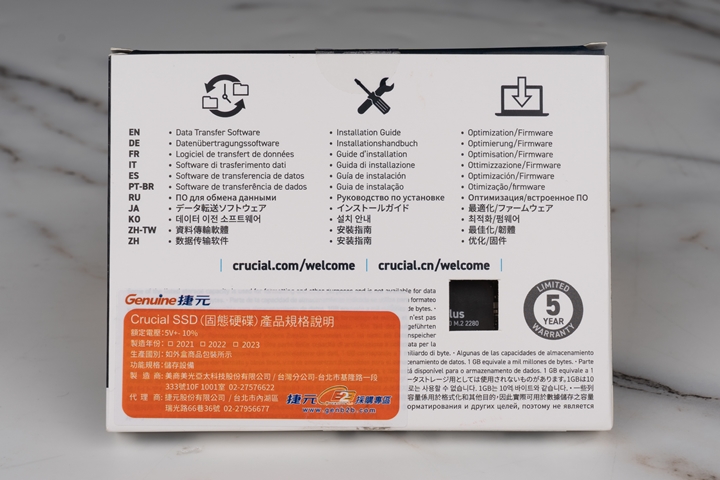
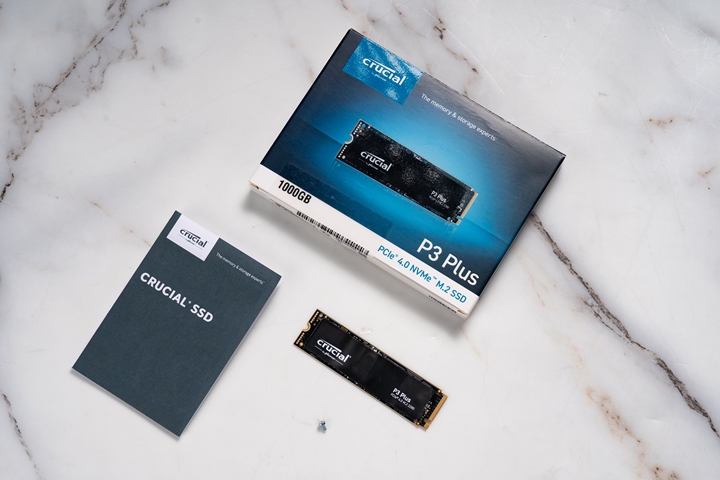
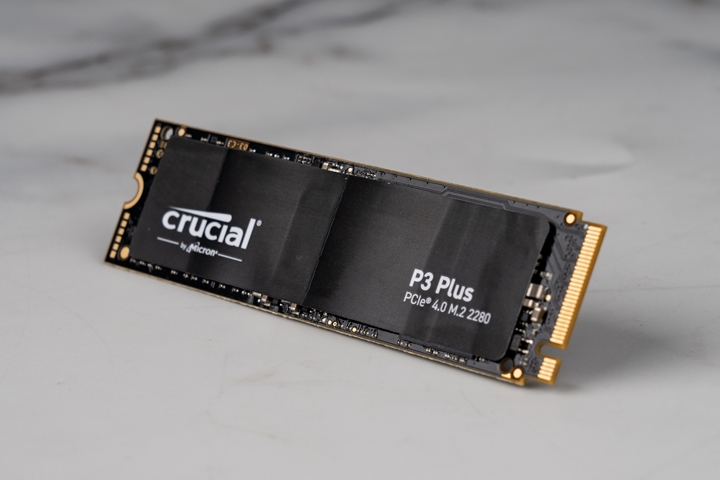
The Crucial P3 Plus SSD 1TB unpacked this time adopts a DRAM-less architecture and a single-sided particle design. The storage particles and the main control chip are located on the front of the SSD, and the back only has the product label sticker.
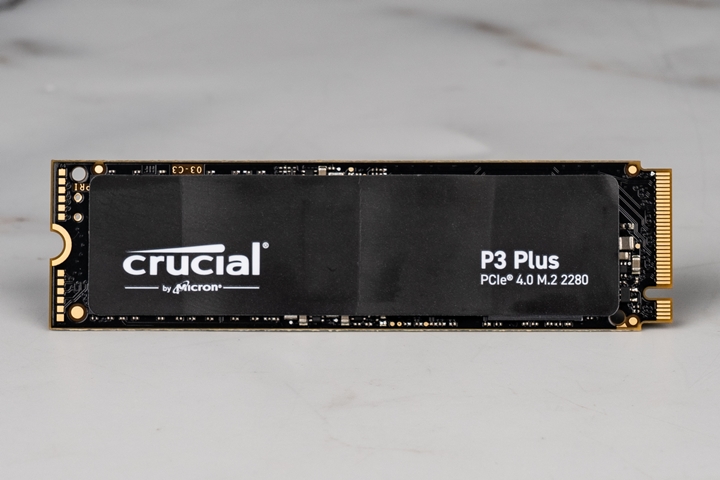
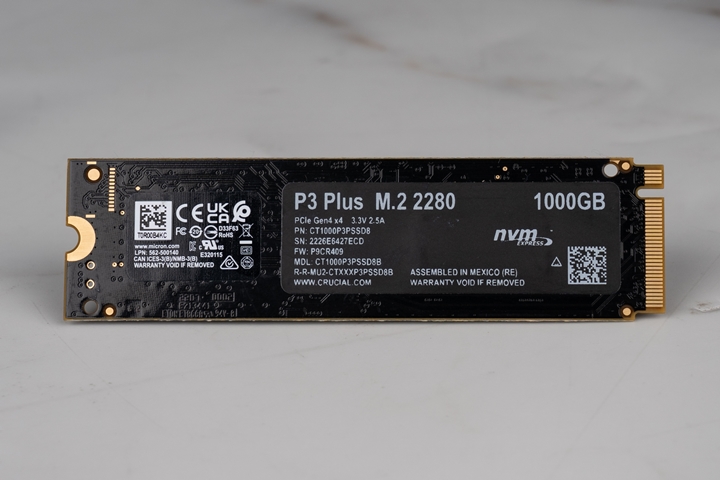
Then remove the sticker on the front to actually see the contents. The Crucial P3 Plus SSD master chip uses Phison PS5021-E21-48 from Phison, which supports the NVMe 1.4 specification, and the flash memory uses 2 Micron’s own 176-layer 3D QLC. NAND particles, and like the aforementioned P3 Plus uses a DRAM-less architecture, so you won’t see a DRAM cache chip.
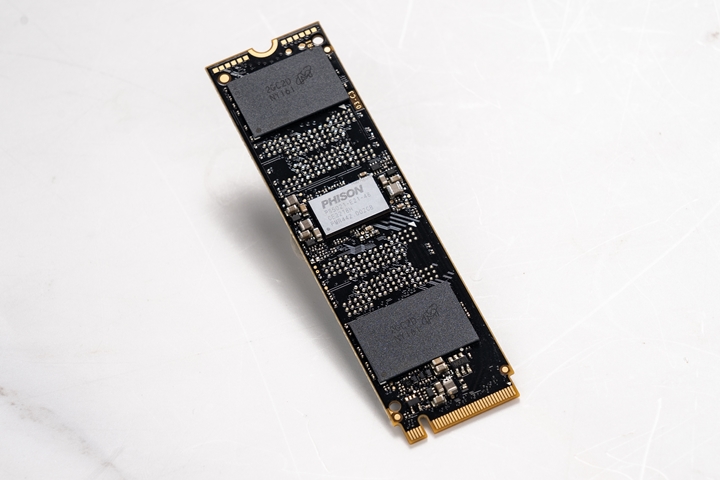
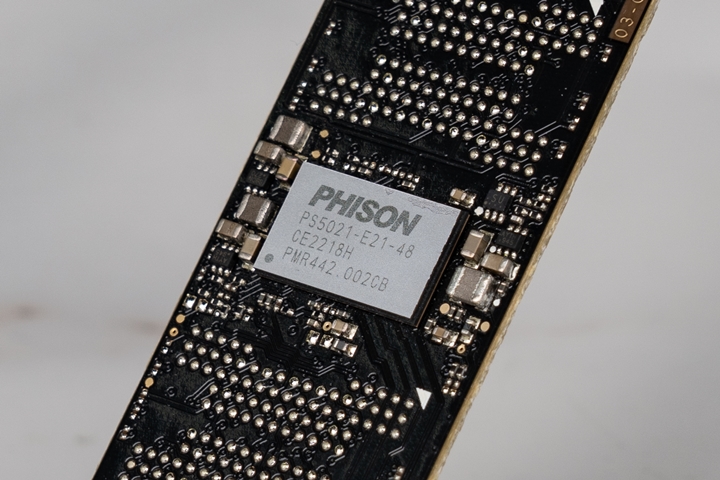
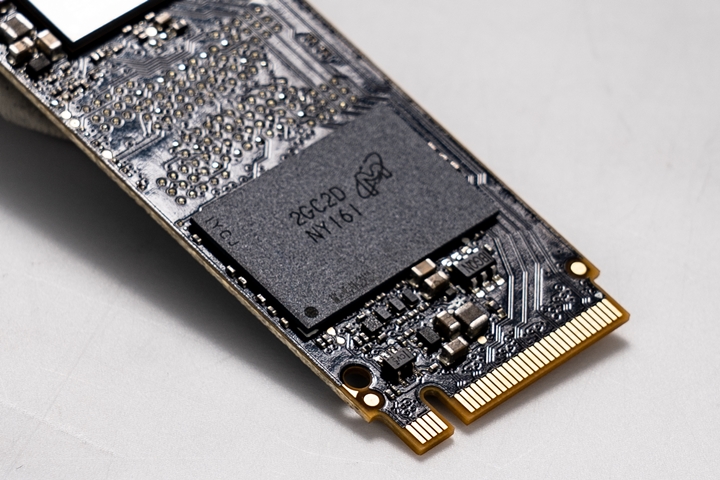
Free exclusive management software: If Crucial Storage Executive
If you want to have a complete and high-speed experience, in addition to the Crucial P3 Plus SSD in hand, it can also be used with the free exclusive management software “Crucial Storage Executive” provided by Micron. Among them, a number of application functions are integrated, allowing players to make more comprehensive use of the SSD in their hands.
The software provides functions such as basic system information, hard disk details, and firmware updates. It also includes the SMART self-monitoring system, which allows the hard disk to self-evaluate its performance and health status, and can determine whether the system or SSD is Comes into play when the fault is caused. In addition, there are also functions such as cleaning drives, formatting drives, PSID recovery, and self-testing.
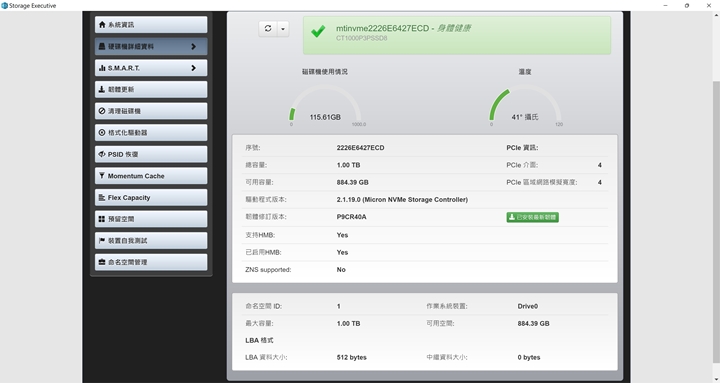
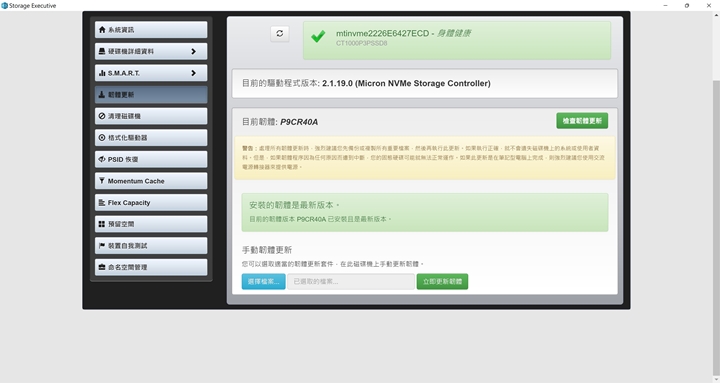
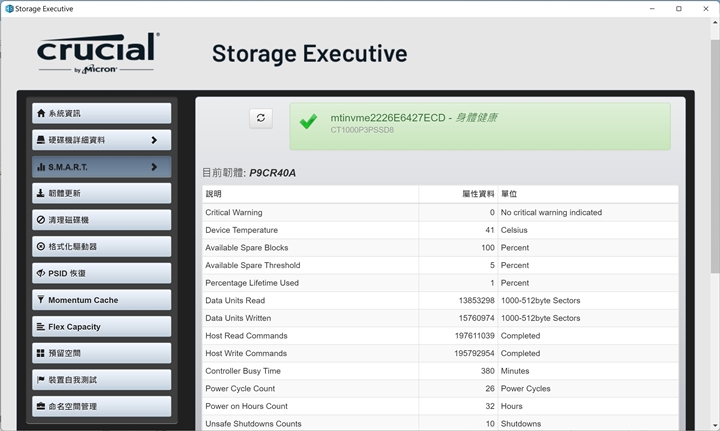
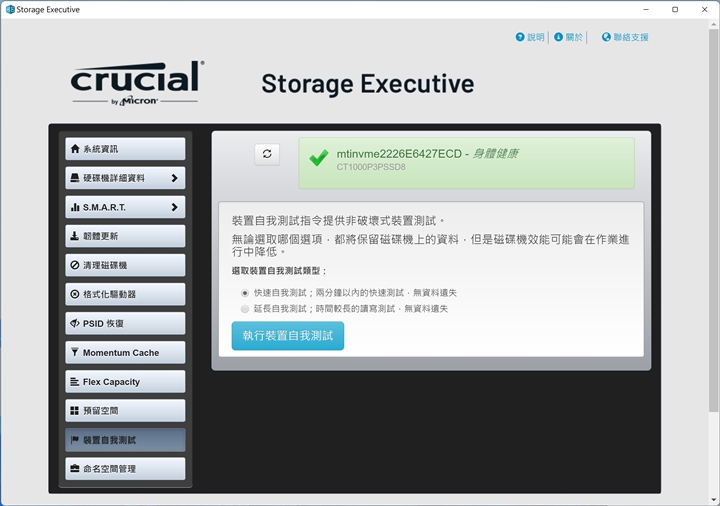
Crucial Storage Executive also provides the “Momentum Cache” function. When this function is enabled, Storage Executive will allocate up to 25% of the system’s available memory (not more than 4GB) and use it as a cache for SSD write commands used to improve performance.
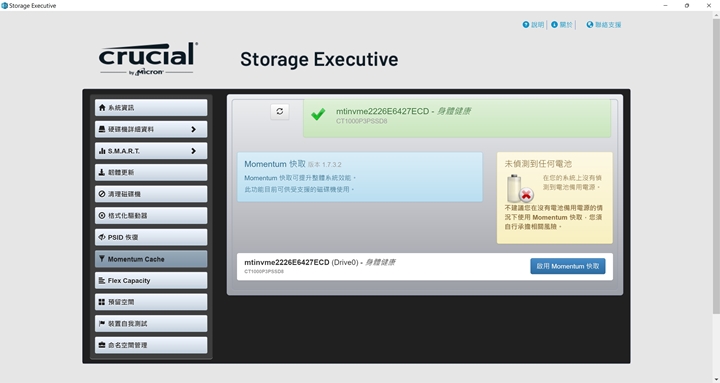
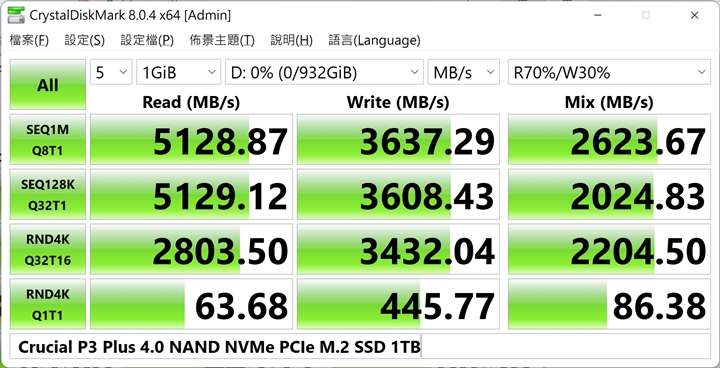
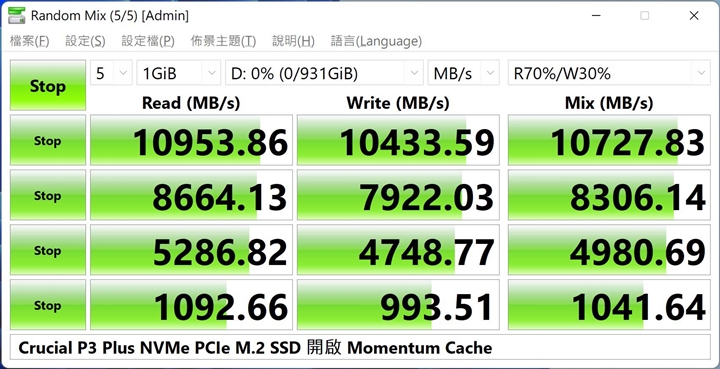
Crucial P3 Plus PCIe 4.0 NVMe SSD Performance Test
The Crucial P3 Plus SSD tested this time has a capacity of 1TB, uses Intel’s 12th generation i5-12600K processor and ASRock Z690 PG Velocita motherboard, and installs it on the first root of the motherboard The M.2 socket uses the CPU channel. As for the heat dissipation, the M.2 heat sink of the motherboard is installed for testing.
Test Platform
Processor: Intel Core i5-12600K
Motherboard: ASRock Z690 PG Velocita
Memory: Micron Crucial DDR5 4800 MHz 32GB x2
Graphics Card: NVIDIA GeForce RTX 3070 Ti
Hard Drive: Micron Crucial P3 Plus 1TB PCIe 4.0 NVMe SSD
Operating System: Windows 11 Home Edition 21H2
Uses CrystalDiskInfo software to view the basic data of Crucial P3 Plus SSD. The firmware is P9CR409. It adopts PCIe 4.0 x4 transmission mode and NVMe 1.4 standard, and supports SMART, TRIM and VolatileWriteCache functions.
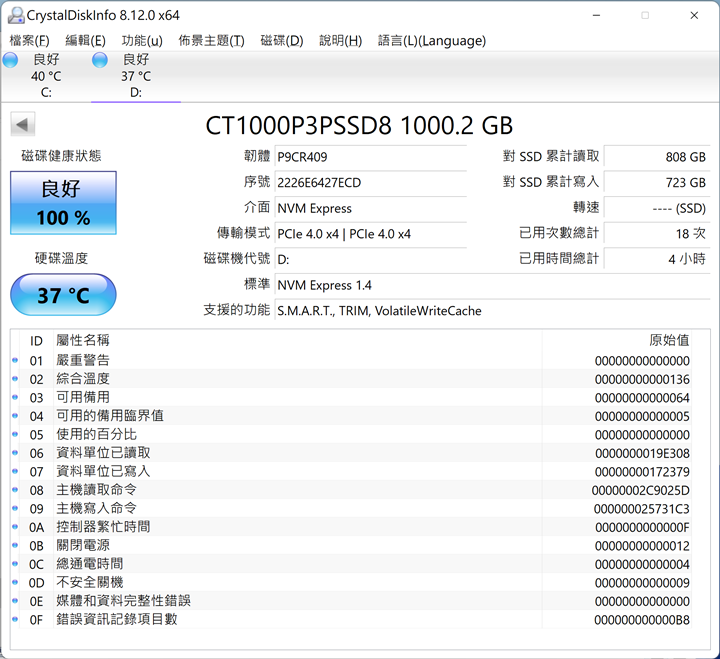
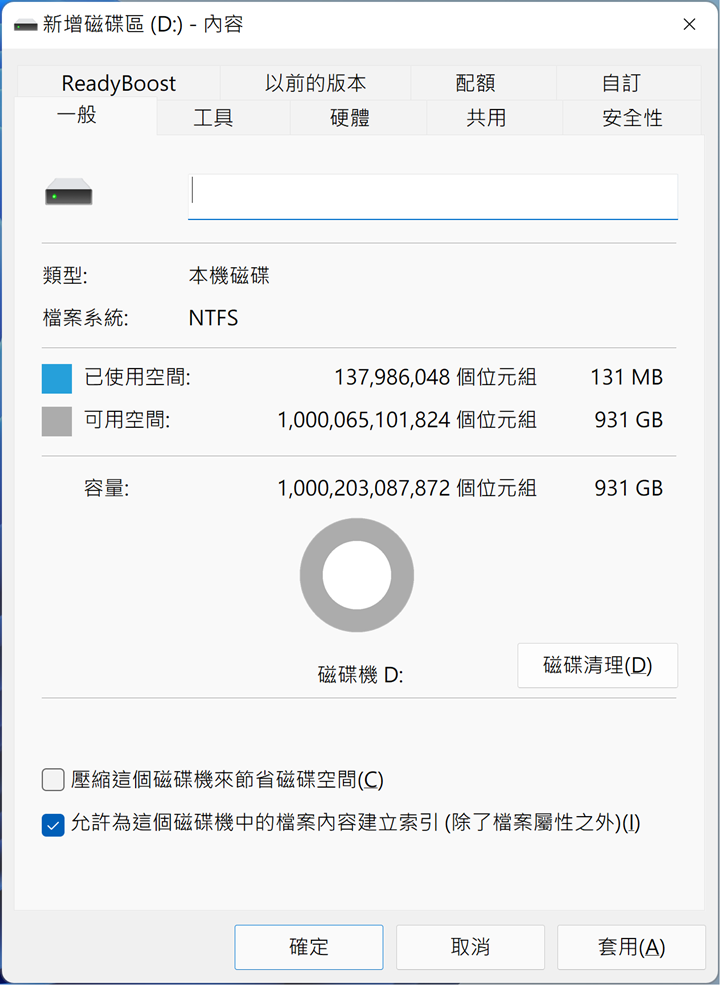
Next, enter the performance test session. The test is carried out in the default state of Crucial P3 Plus SSD, and the “Momentum cache” function is not enabled. First test with CrystalDiskMark, test in default mode, Q8T1 reads up to 5128.87 MB/s sequentially, writes 3637.29 MB/s, random RND4K Q32T16 reads 2803.50 MB/s, writes 3432.04 MB/s.
Switch to the real-world performance mode for testing, and the first column will change to “Q1T1” with queue depth 1 and thread 1 mode. The test results will be closer to the actual daily use situation. At this time, Q1T1 sequentially reads up to 3029.16 MB/s , write 3598.80 MB/s, random RND4K Q1T1 read 54.97 MB/s, write 368.12 MB/s, if converted to IOPS value, read 13420.65, write 89873.29 iops.
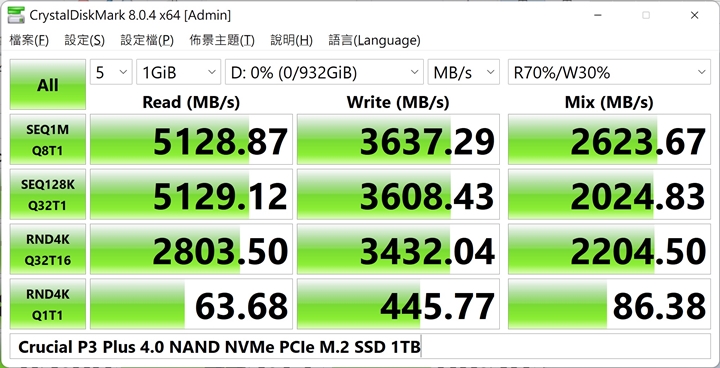
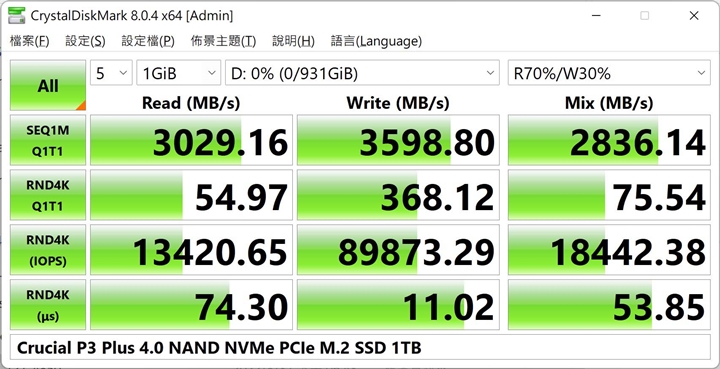
Next, use ATTO Disk Benchmark to test. In this test, files of different sizes are used for read and write tests. In the Direct I/O Queue 8 test, the maximum read and write value of Crucial P3 Plus SSD can reach 6.59 GB/s, 5.88 GB/s.
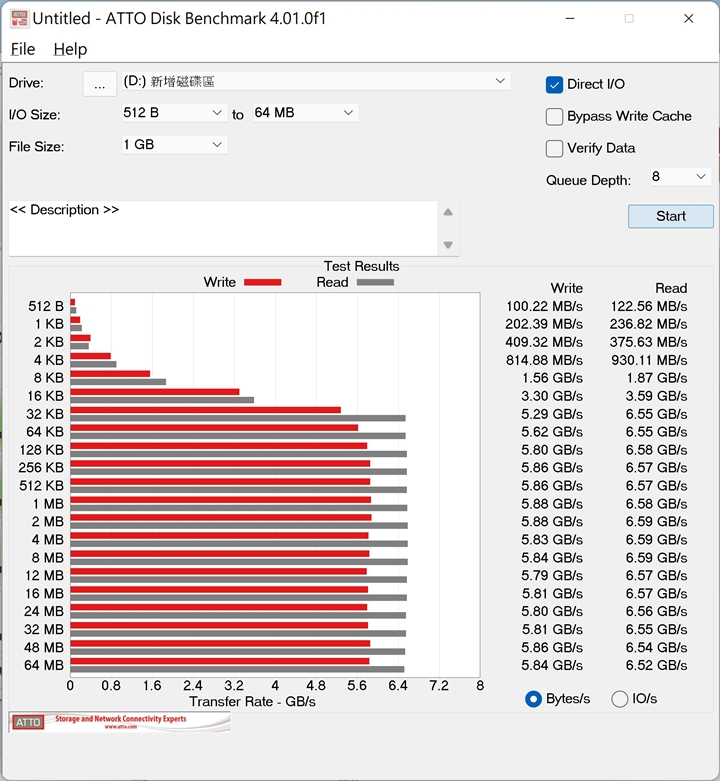
The performance of video file writing and reading is simulated by AJA System Test, which is set to 5120×2700 5K RED format and 64GB files. The final result is 3,442 MB/s for writing and 4,031 MB/s for reading.
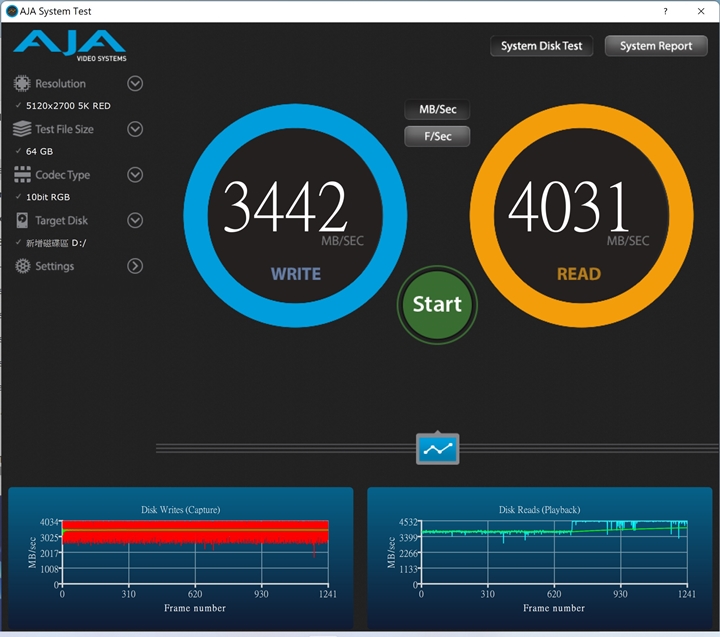
Then use AIDA 64 Disk Benchmark to perform linear continuous read and write test. In terms of read test, the speed of Crucial P3 Plus SSD is stable in the range of 4,800~5,700 MB/s.
In addition, due to the use of the SLC cache mechanism, this technology divides a buffer space in the QLC device to simulate SLC, so that the speed within this range is improved. The cache is exhausted at 30% capacity, so the speed drops to about 70 MB/s write speed for raw QLC. However, there is no need to worry too much about basic use and game use. For players who need to read and write large files and continuous transmission, this should be taken into consideration.
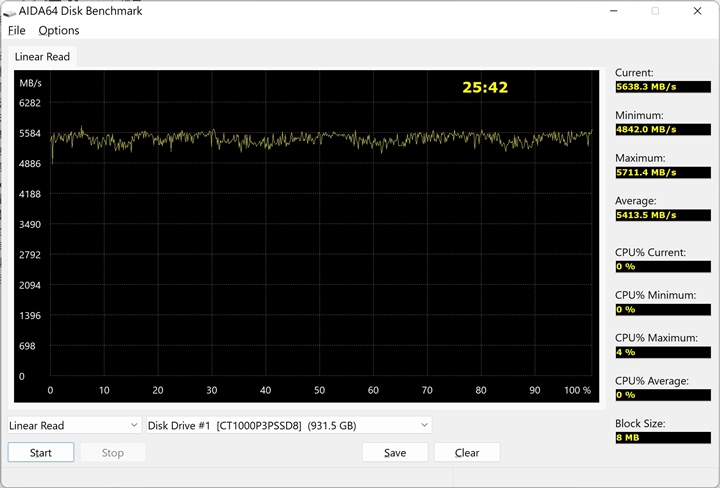
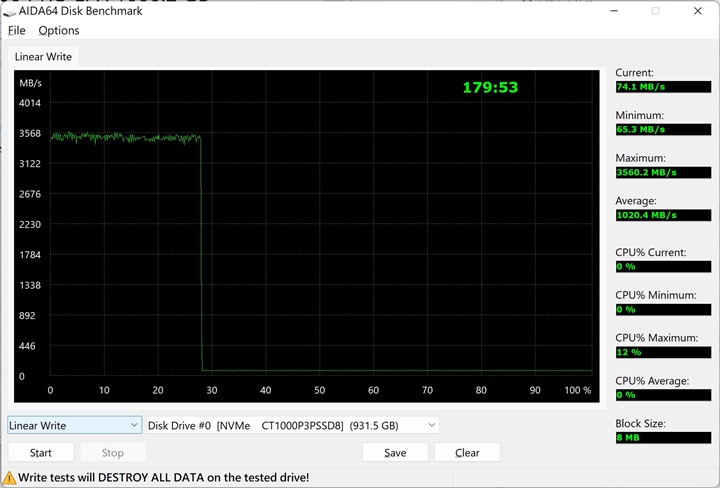
PCMARK 10 also provides storage test items. The Full System Drive Benchmark is tested with actual commonly used applications and software. The bandwidth test shows that the Crucial P3 Plus SSD has 454.17 MB/s, and the average access time is 62µs, and the total score is obtained. 2,771 points.
Another test, Data Drive Benchmark, simulates a data disk for small file transmission performance tests. The final Crucial P3 Plus SSD has a bandwidth of 883.39 MB/s, an average access time of 27µs, and a total score of 5857 points.


In addition to the general test software scores, the FastCopy program is actually used here, and the test is actually transmitted with files of different sizes and different data types. Crucial P3 Plus SSD reads 2031.36 MB/s and writes 1996.63 MB/s when transferring a single large file (28GB); when transferring 100 fixed-size RAW files, it reads 2089.32 MB/s and writes 2046.56 MB/s; but actually read 1998.38 MB/s and write 1967.22 MB/s under the transmission of the game folder of “Ayrden’s Circle”; and in the case of a large number of small files, the reading speed is faster, 1598.75 MB/s, writing is slightly slower at 931.67 MB/s.
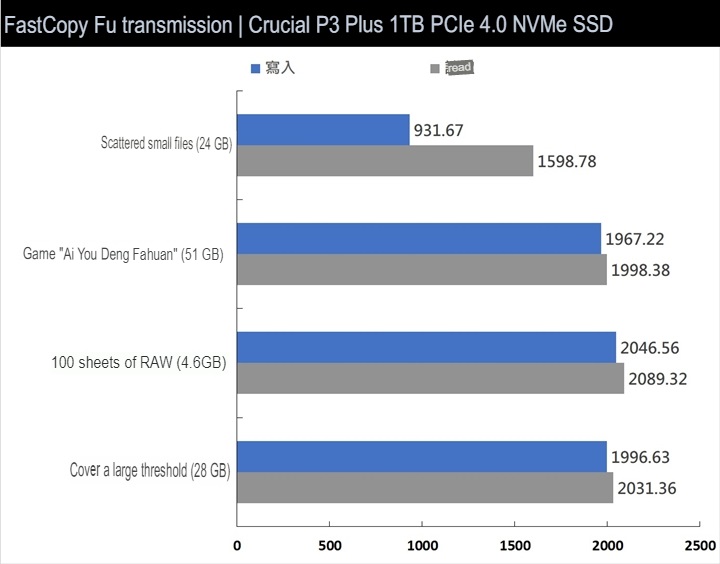
Finally, the editor who likes to play games also tested the loading speed of the game. Here, we use FFXIV Benchmark to test the time it takes to actually load the game, while the Crucial P3 Plus SSD only takes about 5.9 seconds to complete the loading and play the game. No worries!

The temperature performance of the Crucial P3 Plus SSD in the actual test is also attached here. During the test, the heat sink of the motherboard is used to supplement the cooling, and HWiNFO64 is used to record the temperature. It can be seen that the highest temperature reached 63°C during the test, so if players want to obtain high performance, they must also give enough heat dissipation!

Summarize
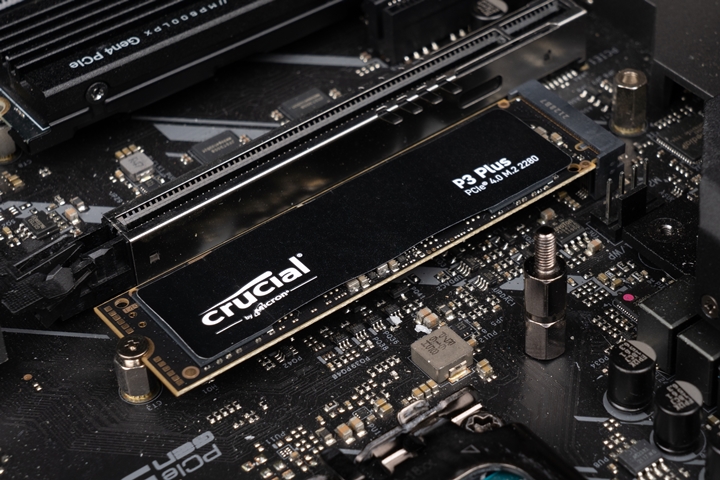
It used to be expensive to own a high-speed PCIe 4.0 NVMe SSD, but now there is a whole new possibility. The new Crucial P3 Plus SSD launched by Micron uses its own QLC 3D NAND particles, and uses the PCIe 4.0 x4 interface and NVMe 1.4 specification. After various tests, it can indeed achieve the official read and write speeds of 5,000 and 3,600 MB/s. .
Although this speed is not the first class in PCIe 4.0 SSD, it can also be used together with Micron’s own convenient management software “Storage Executive”, in which the Momentum cache function can further improve its performance.
Another point to note is that since the Crucial P3 Plus SSD adopts the DRAM-less architecture and SLC cache mechanism, if there is a need for reading and writing large files and continuous transmission, it is recommended to buy a higher-end Crucial P5. Plus SSD.
In addition, Crucial P3 Plus SSD has a very affordable price, 500GB is NT$1,799, 1TB is NT$2,799, and 2TB is NT$5,600, so players who want to get started with PCIe 4.0 high-speed experience have a very good price. choose.
If this article is helpful for you, please share this article with your friends on social media. Thank you!!
This article is based on the personality of the reviews. You are responsible for fact-checking if the contents are not facts or accurate.
Title: PCI-E 4.0 has a new way to get started! Introducing the Micron Crucial P3 Plus 1TB M.2 NVMe SSD